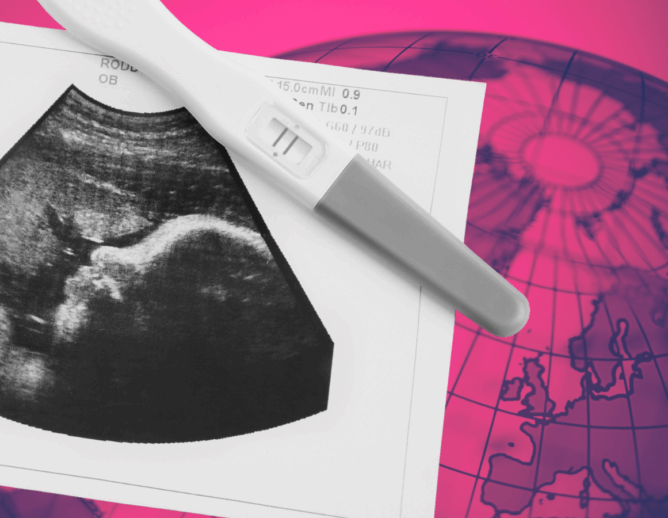In July, the Centers for Medicare & Medicaid Services (CMS) proposed to expand site-neutral payment policies in the Medicare program to include drug administration services provided at certain off-site hospital facilities. Doing so would ensure that Medicare pays the same rate for this care regardless of where the care takes place, resulting in lower costs to Medicare beneficiaries and the Medicare program, as well as reduced incentives for health care consolidation. This proposal builds on prior site-neutral payment policies put in place by Congress and CMS, with the latter facing legal challenges from hospitals.
Given the history of site-neutral litigation — and the nature of legal comments submitted on the proposed rule — litigation is expected if CMS adopts new site-neutral payment policies. This article summarizes the legal arguments made by hospital stakeholders that CMS will need to consider and respond to in future rulemaking and litigation.
Background on Medicare and Site Neutrality
Many hospitals offer outpatient care at off-campus provider-based departments (PBDs). Such care, which includes routine clinic visits, can be provided at a physician’s office. Even though patients can obtain the same care in both settings, Medicare currently reimburses PBDs at a higher rate than physician practices. This is because off-campus PBDs — which may have been physician offices that were acquired by a hospital — are considered hospitals and are thus reimbursed under the higher hospital outpatient prospective payment system (OPPS). In contrast, care provided at physicians’ offices is reimbursed under the lower Medicare physician fee schedule (PFS).
This payment differential — where off-campus PBDs are reimbursed at a higher rate than physician practices even for the same outpatient care — leads to higher out-of-pocket costs for Medicare beneficiaries and higher Medicare expenditures. And these incentives have contributed to vertical consolidation (where hospitals purchase physician practices), which, in turn, has led to higher health care costs, including in the commercial market.
To help address these concerns, federal policymakers have advanced site-neutral payment policies. In the Bipartisan Budget Act of 2015, Congress reduced Medicare payments for new off-campus hospital PBDs (i.e., those that started billing on or after November 2, 2015) but not existing or already planned off-campus PBDs, which were exempted from this payment reduction. “Excepted” off-campus PBDs can continue to acquire new physician practices and bill under the opportunities, while non-excepted off-campus PBDs are reimbursed at the lower PFS-equivalent rate. Congress created additional exemptions for certain off-campus PBDs over time.
Building on these changes, CMS adopted a site-neutrality policy for clinic visits for 2019. Under 42 U.S.C. § 1395l(t)(2)(F), CMS can “develop a method for controlling unnecessary increases in the volume” of hospital outpatient department services. To help control a higher volume of clinic visits in PBDs, CMS decided to reimburse excepted off-campus PBDs at the PFS-equivalent rate for clinic visits. This site-neutral policy was phased in over two years, and CMS later exempted rural sole community hospitals.
The American Hospital Association (AHA) challenged the 2019 policy in court. Although the D.C. district court held that CMS had exceeded its authority, the D.C. Circuit reversed because CMS’ policy was a reasonable interpretation of Section (t)(2)(F) and that CMS was entitled to deference under Chevron v. Natural Resources Defense Council. In AHA v. Azar (AHA, on subsequent reference), the D.C. Circuit held that federal law, including the OPPS budget neutrality requirement, does not foreclose CMS’ adoption of “a service-specific, non-budget-neutral rate cut.”
CMS’ Proposed Rule to Expand Site-Neutrality to Drug Administration Services
CMS now proposes to expand its prior site-neutral policy to include drug administration services at excepted off-campus PBDs. This is not a surprise: President Trump directed CMS to consider such a policy in April. CMS’ proposal also comes at a time of continued bipartisan support and momentum for site-neutral policies in Congress.
Under the proposed rule, Medicare would reimburse providers at the PFS-equivalent rate (rather than the OPPS rate) for drug administration services at excepted off-campus PBDs. CMS cites significant growth in drug administration services in PBDs from 2011 to 2019 — even as the number of beneficiaries in fee-for-service Medicare declined. As one example, CMS noted an increase in chemotherapy administration at PBDs compared to physician offices, and that hospital or health system ownership of cancer care practices doubled from 2003 to 2015. The proposed policy would not be adopted in a budget-neutral manner or apply to rural sole community hospitals (which would continue to be reimbursed at the OPPS rate).
CMS also solicited public comment on (1) whether the agency should expand site-neutrality to other services (e.g., imaging services without contrast); and (2) ways to systematically identify services that could shift from physician offices to hospital settings and thus might be strong candidates for site-neutral payments. CMS also asked for data on how on-campus PBDs would be affected if reimbursed for a clinic visit at the PFS rate. This information will be used to inform potential future site-neutral payment policies.
Legal Comments on CMS’ Proposed Site-Neutrality Policy
Our review of select publicly available comments — which were due on September 15 — suggests that a range of stakeholders supported CMS’ proposed site-neutrality policy. Supportive comments were filed by organizations, including the Bipartisan Policy Center, the Consumers First coalition, the Medicare Payment Advisory Commission, Paragon Health Institute, and PhRMA. Many of these commenters emphasized the importance of site-neutral payments to lowering costs and limiting consolidation; some called for a phased-in approach to the policy.
Other commenters — including America’s Essential Hospitals (AEH), the AHA, the Association of American Medical Colleges, the Federation of American Hospitals (FAH), and the National Rural Health Association — opposed the expanded site-neutral payment reform in the proposed rule. Many, though not all, of these commenters claimed that the rule violates the Administrative Procedure Act, largely reiterating long-standing objections to CMS’ prior site-neutral policy and the D.C. Circuit’s decision in AHA.
Argument #1: CMS Lacks Legal Authority to Adopt the Site-Neutral Policy
Several hospital stakeholders argued that CMS’ interpretation of Section (t)(2)(F) is inconsistent with federal law and thus violates the Administrative Procedure Act. The AHA, for instance, asserted that CMS improperly places “total reliance” on AHA even though the Supreme Court’s decision in Loper Bright, which overturned Chevron,calls the D.C. Circuit’s reasoning into question. The AHA also argues that CMS violated the major questions doctrine by claiming “unfettered power” to “supersede Congress’ carefully crafted relative payment system” based on a “vague provision buried elsewhere in the statute.” AEH suggested that even the existing site-neutral policy for clinic visits “might not survive a court’s review” now that Chevron has been overturned. And FAH argued that the statute simply “does not permit” a non-budget-neutral, site-neutral policy for excepted off-campus PBDs.
Hospital stakeholders also asserted that CMS’ interpretation of Section (t)(2)(F) is foreclosed by Section 603 of the Bipartisan Budget Act of 2015. In both the 2019 rulemaking and now, CMS failed to properly account for Section 603’s explicit carveout for certain PBDs, and the new proposed rule “undermines the balance struck by Congress” in protecting excepted PBDs from reimbursement under the PFS. The FAH further urged CMS to adopt any site-neutral policy in a budget-neutral manner, which it argues is required because CMS is making an “adjustment” under Section (t)(9)(B), a provision that requires CMS to carry out payment adjustments in a budget-neutral manner.
These commenters raised similar arguments in response to CMS’ request for comment on related site-neutral payment policies. AEH, for instance, noted that there is “no statutory basis” for on-campus site-neutrality policies and that CMS cannot “override” the statutory framework set by Congress. And the AHA noted its strong opposition to site-neutral payment policies that attempt to “fundamentally rewrite the law” under Section (t)(2)(F).
Argument #2: CMS’ Proposed Rule is Arbitrary and Capricious
In addition to these statutory arguments, hospital commenters argued that CMS failed to consider key factors and may have made errors in estimating the policy’s impact. Given these defects, they suggested that CMS’ interpretation is arbitrary and capricious and thus violates the Administrative Procedure Act.
The AHA, for instance, disputed that higher payments for drug administration services are incentivizing vertical consolidation — pointing instead to factors such as burnout and rising costs to explain why physicians are leaving private practice. Commenters also asserted that CMS’ proposal relies on a “flawed premise” that care in PBDs is equivalent to care in physicians’ offices and that costs are comparable across sites. Further, these commenters suggested that PBDs serve more clinically complex and low-income patients who require a greater level of care than those seen in physician offices. And, despite CMS’ exclusion of rural sole community hospitals, hospital stakeholders argued that the proposal will still jeopardize access to care for patients in rural and other underserved areas.
In addition to these arguments, the FAH submitted data to try to undercut CMS’ assertions of “unnecessary growth” in utilization in excepted off-campus PBDs. Citing data over the past five years — compared to CMS’ data from 2011 to 2023 — the FAH argues that there have been declines in at least some utilization in drug administration services. And the AHA suggested that CMS incorrectly estimated the impact of the proposed site-neutral policy.
Finally, the FAH argued that the proposed policy is arbitrary and capricious because it is overly broad. Instead of being targeted at unnecessary services, the policy applies to all drug administration services.
What It Means and What Comes Next
These arguments notwithstanding, CMS has clear authority under Section (t)(2)(F) to control unnecessary increases in the volume of services provided by hospital outpatient departments. As the D.C. Circuit held in AHA, this includes the authority to adopt a service-specific, non-budget-neutral rate cut to control unnecessary volume increases. Indeed, many of the arguments made by hospital stakeholders are not new and are rather an attempt to relitigate CMS’ 2019 site-neutral policy and the D.C. Circuit’s decision in AHA. (For instance, the AHA’s comment letter “incorporate[s]” the arguments made in its briefing in AHA as well as its prior comments to the agency in 2018.)
While hospital stakeholders have repeatedly asked CMS to revise its interpretation of Section (t)(2)(F), these arguments took on additional salience after the Supreme Court overruled Chevron in 2024. In the 2025 OPPS rule, CMS rejected commenters’ request to “disregard” the D.C. Circuit’s decision in AHA as “overtaken” by Loper Bright. CMS reaffirmed that Section (t)(2)(F) authorizes the Secretary to “remov[e] a payment differential that is driving a site-of-service decision.” CMS further noted that Loper Bright does not change the result in AHA because Congress delegated discretionary authority to CMS to develop a method for controlling unnecessary volume increases.
In its most recent rule, CMS maintained this position in proposing to extend the site-neutral policy to drug administration services. Citing AHA, CMS explained that the proposed policy “falls comfortably within the plain text” of Section (t)(2)(F) and “and fit[s] the design of the statute as a whole and its object and policy.” CMS also asserted that the proposed policy is a volume-control method rather than an “adjustment,” so budget neutrality is not required. If the policy is finalized as proposed, CMS will likely make similar assertions in the final rule in response to the commenters’ legal claims that are discussed above.
CMS will also need to respond to additional arguments made by commenters. For instance, CMS will need to explain why the proposed policy does not conflict with Section 603 of the Bipartisan Budget Act of 2015. This issue was discussed by the D.C. Circuit in AHA where the court concluded that “nothing in the text of section 603 indicates that preexisting off-campus PBDs are forever exempt from adjustments to their reimbursement.” CMS will also need to consider any factors and data raised by commenters, much of which were raised and responded to with respect to the 2019 site-neutral policy. While many of these arguments are largely disputes over the policy, it will be important for CMS to address them in the final rule.
CMS is expected to issue its final rule in November. While much will depend on whether and how CMS finalizes the proposed site-neutral payment policy, litigation over the final rule for 2026 seems likely.
DISCLAIMER: The views and opinions expressed in this piece are those of the authors and do not reflect the views of the O’Neill Institute.



